Beauty, Art, and Form are all Around Us
I’m a sucker for history. Really, any kind of history. I’m the nut who takes forever at a museum reading every single description. I took an Art History class in college in my last semester as a blow off class before I graduated and spent the week before the major paper was due sitting in front of pieces of art in the De Young Museum in Golden Gate Park writing my impressions of the Impressionists. My sixty-page masterpiece of B.S. earned me a passing grade and a greater appreciation of art. I spent the next decade bouncing all over the globe playing professional tennis and during that time, I was an aggressive tourist—visiting every museum in every city I visited between matches.
Fast forward to what feels like a few hundred years and careers to my present role at the Stark Center. I was walking through the ground floor of the San Jacinto dorm the other day and it was only natural for me to stop and read every placard underneath the historic photos that line the walls. A particular photo stopped me in my tracks. One of the most wondrous experiences I had when I first walked in the door at the Stark was being surrounded by what is referred to as “The Battle Casts.” These glorious statues found in the reading room and in the Teresa Lozano Long Art Gallery are form and art melded into one and transports anyone who gazes upon them instantly back to ancient Greece. Not knowing anything about them, my original imaginative thought was that they had been obtained by some ancient warrior in an epic “battle.” Nope, not even close. What they are and how they came to be at the Stark is a compelling story and the photo that stopped me in my tracks was none other than Dr. William James Battle in his classroom amongst his casts in 1899.
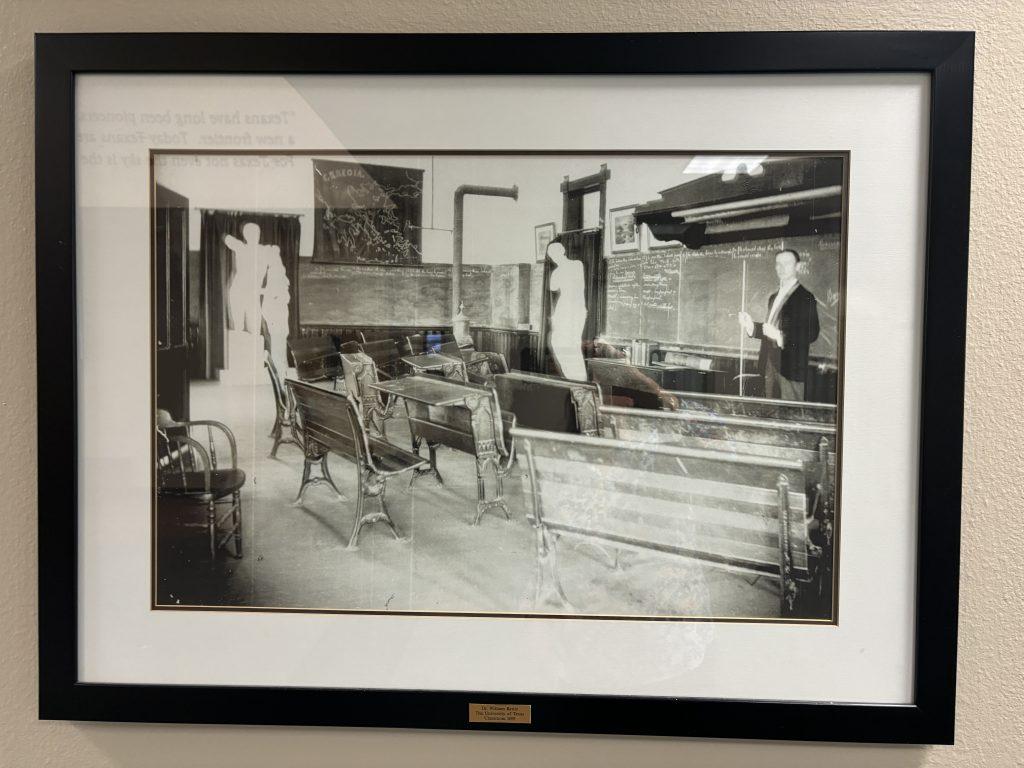
Dr. William James Battle arrived at UT in 1893 as an associate professor of Greek. He would eventually become the Dean of the College of Arts in 1908 and then the 6th President of the University from 1914-1916. Along the way, he furnished the money in 1898 to establish the University Co-Op and served as its first manager, edited the first student directory in 1900, designed the UT seal in 1901, and founded the first ex-students’ magazine. Most significantly, in 1894 Dr. Battle began purchasing approximately 100 plaster casts of ancient Greek and Roman sculptures, beginning with three full-scale casts—the Hermes of Praxiteles from Olympia, the Venus de Milo, and the Lateran Sophocles.
Assembling plaster cast collections of ancient sculpture was an established tradition among large universities and museums in countries without their own Classical heritage. Battle’s cast collection was the first in the central United States and helped establish the University of Texas’s status in Humanities innovation. Dr. Battle’s goal was to enhance the student’s understanding of classical civilization by offering visual examples of the art that embodied the history, literature, philosophy, and mythology of the period. In addition, the casts were used in studio art classes to teach technical and anatomical drawing. The casts were displayed in his classrooms and in the university’s main building for many years.

The prevailing thought in the middle decades of the 20th century was to use the newest educational technology in the classroom. Slide projectors became the new medium. The slides were fabricated from photographs of the ancient original sculptures in foreign settings and thereby considered more “authentic” than the replicas in plaster. Sadly, during the 1950s, many universities and museums thought the casts to be obsolete and destroyed or removed them from permanent collections. Dr. Battle’s continued presence at UT saved the Battle Casts from destruction but because of the changing ideas of authenticity and conflicting claims about how the university’s public spaces would be occupied, the casts were relegated to storage.
In 1976, Caroline Houser, associate professor in the Department of Art and Art History at UT examined the casts’ condition and the damage they had sustained in their many moves between galleries, spaces on campus, and storage. UT President Lorene Rogers funded their restoration and reinstallation on campus. The restored Battle Casts were first displayed in the Blanton’s previous location (now the HRC), and later in the new Blanton building in a place of honor in its atrium and rotunda.
The backstory to this is that Dr. Terry Todd, co-founder of the Stark Center, always admired the Battle Casts. He had fallen in love with the power and beauty of the statues as an undergraduate and budding iron gamer in the late 1950s/early 60s. They had made such an impression on him that after graduation, he would make special trips to campus over the next 20 years to visit the Battle Casts during the holidays. When he joined the faculty in 1983, he asked if the Director of the Humanities Research Center would loan several of the more “athletic” statues to them when Terry and Jan Todd moved into Gregory Gym to complement their growing collection of physical culture. It wasn’t to be at the time but, many years later, the Director of the Blanton, Professor Ned Rifkin and Blanton Curator, Jesse Otto Hite, agreed to loan the new H.J. Lutcher Stark Center for Physical Culture and Sports a half dozen of the casts.
Six of Dr William Battle’s casts are still on loan from the Blanton at the Stark. Each one is an amazing piece in and of itself. They are the three-dimensional, visual representation of physical culture. We have students from not only UT but from universities around the globe to view the casts. Students from art classes come to sketch them, others from art history to see, research, and write about them, and visitors who are titillated by their presence. The six Battle Casts we have are:
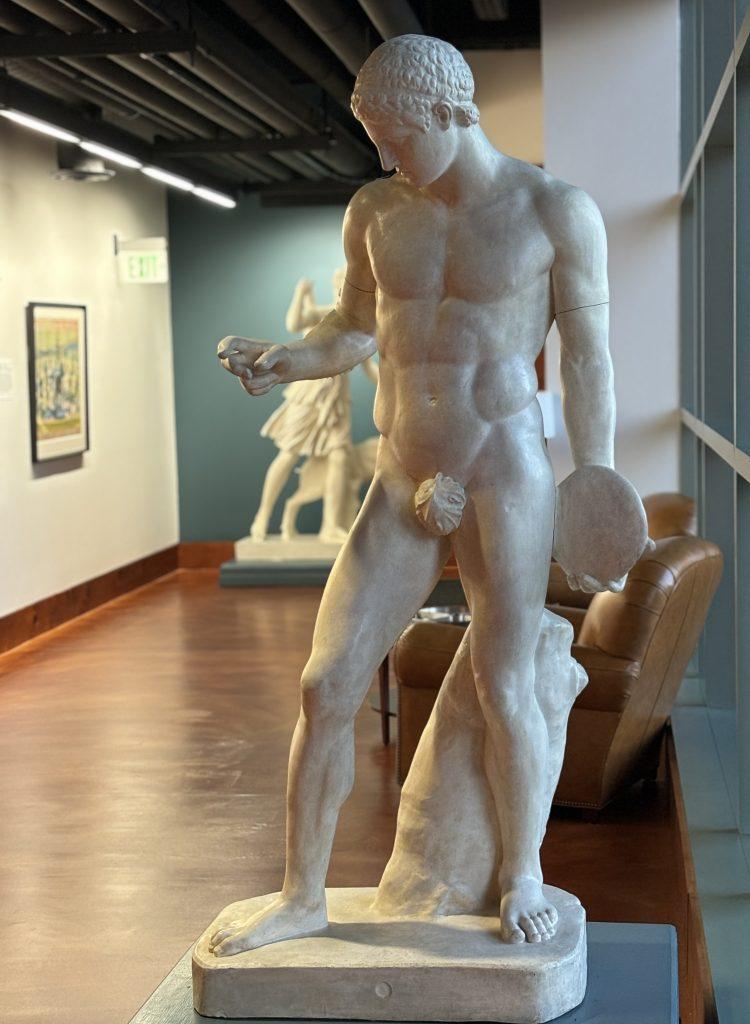
The Discus Thrower—first done as a bronze in Greece in the mid-fifth century B.C. and later in marble in Rome, where it’s displayed at the Vatican.
Heracles (Hercules) or Dionysus—done in marble circa 438-432 B.C. in Greece for the Parthenon in Athens. Now displayed at the British Museum, London.
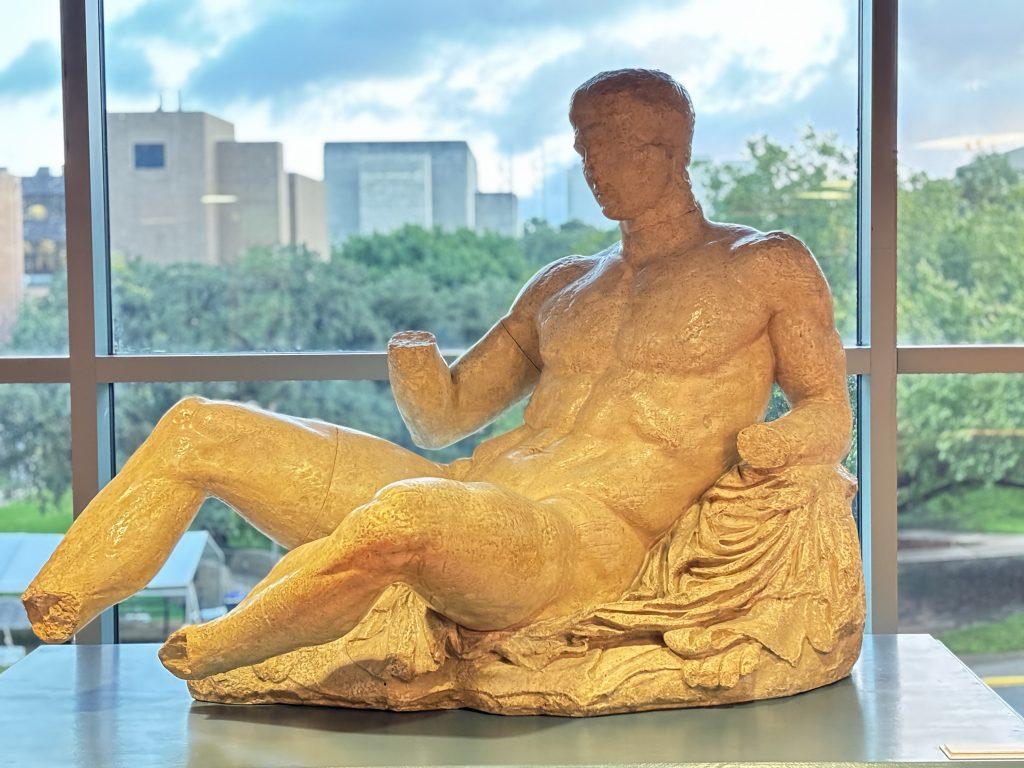
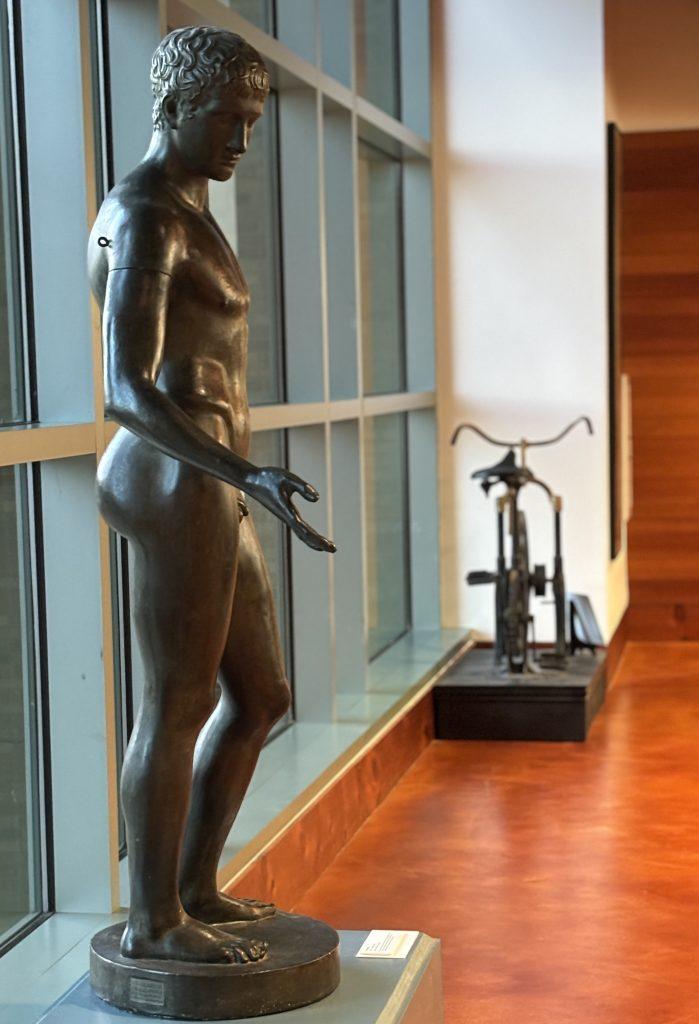
The Idolino—done originally during the last half of the fifth century B.C. with our cast taken from a Roman copy made in bronze. Displayed in Florence, Italy.
The Wrestlers—done in the second century A.D. in Greece with our cast being made from a Roman marble copy now on view in the Vatican Museum.
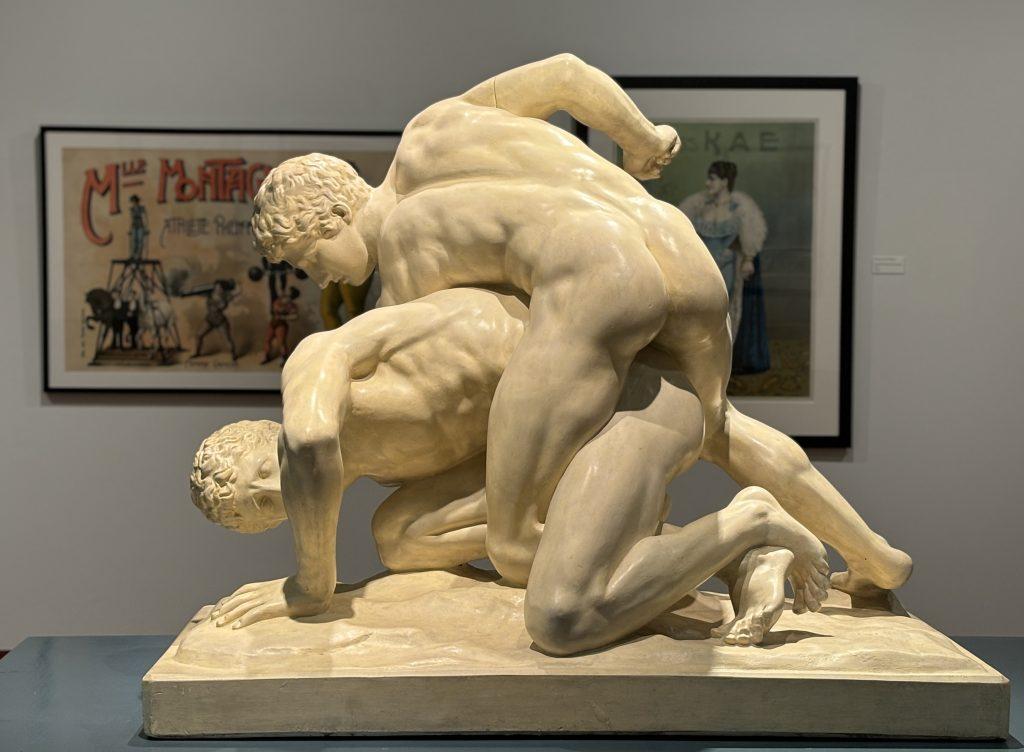
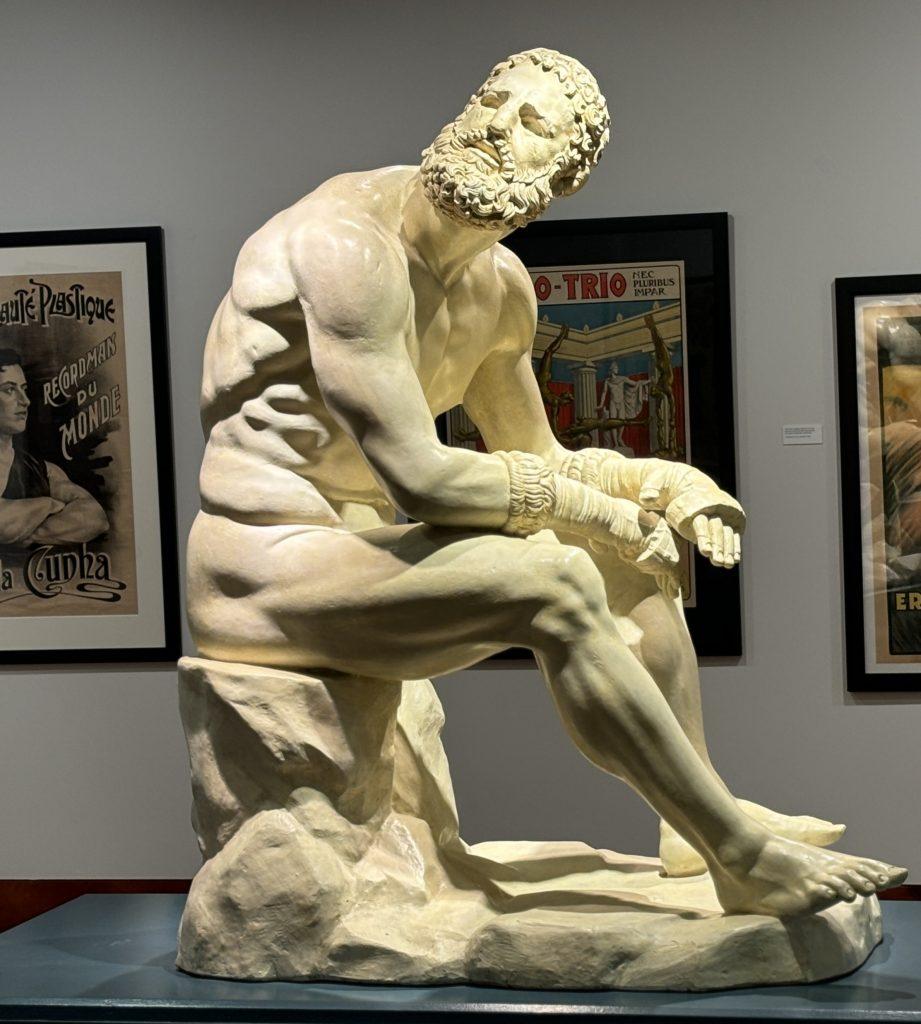
The Boxer—done originally in bronze in the mid-first century B.C. in Rome and now on display at the Terme (Baths) Museum.
Artemis with Stag, Goddess of the Hunt—done originally in bronze sometime between the first century B.C. and the 1st century A.D.
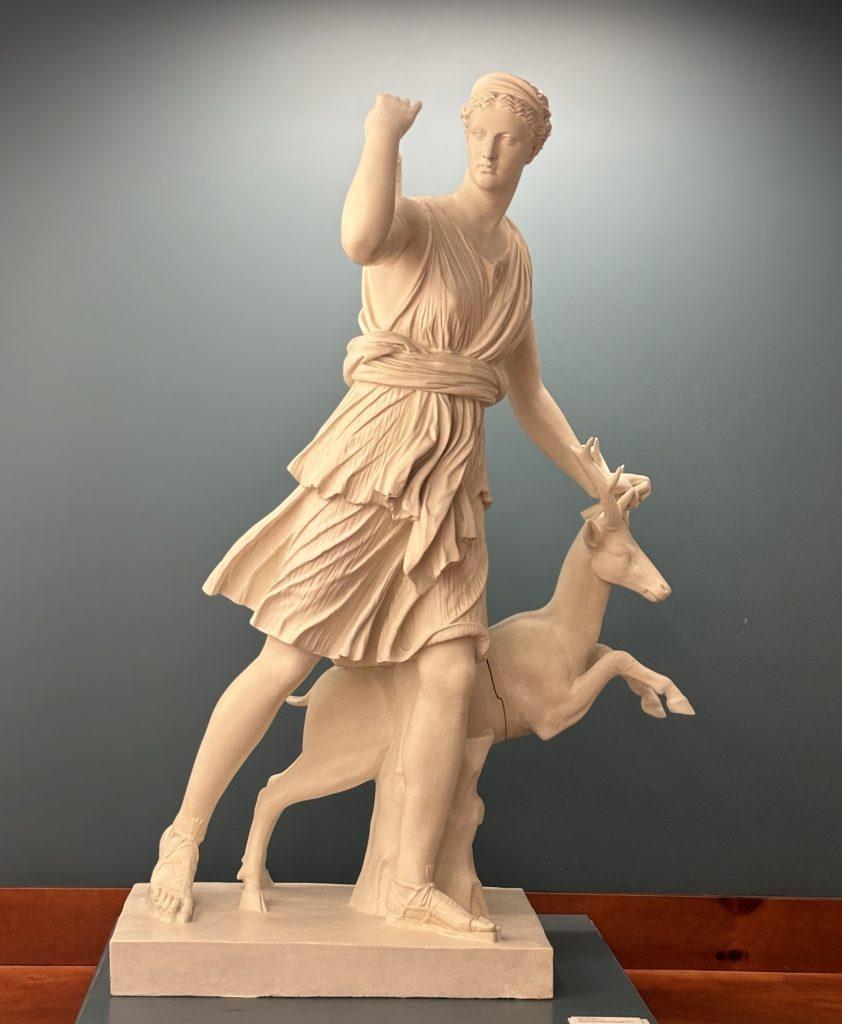
The Battle Casts are viewed as art objects in their own right now and they now exist as one of the largest surviving collections of plaster casts in North America. Today, they continue the tradition of Texas institutions that provide innovative opportunities for deeper study, dissemination, and critique in the Humanities.
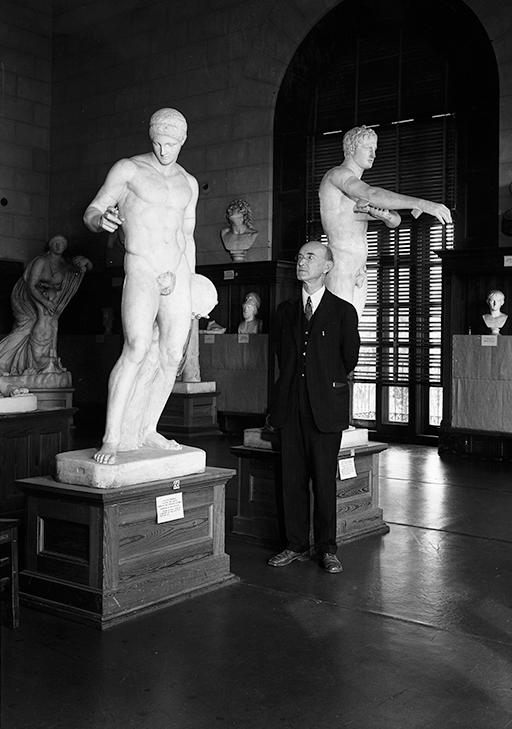
Special Thanks to the Blanton Museum of Art, the Dolph Briscoe Center for American History, Dr. William Battle, and Dr. Terry Todd for allowing the Stark Center to house the Battle Casts.



Leave a Reply